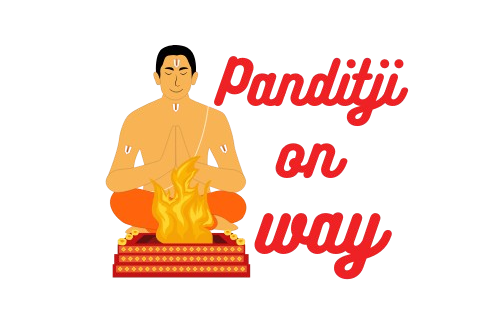4 Vedas Name in Sanskrit and English – Origin, Knowledge, Importance & Modern Relevance
Discover the complete details about the 4 Vedas name in Sanskrit and English — Rigveda, Yajurveda, Samaveda, and Atharvaveda. Learn their origin, wisdom, importance in Sanatan Dharma, and their relevance in modern life.

4 Vedas Name in Sanskrit and English
The four Vedas are the foundation of Sanatan Dharma. These sacred texts are regarded as divine revelations (Shruti) and contain the essence of spiritual, scientific, and moral teachings.
Below are the 4 Vedas names in Sanskrit and English:
| Sanskrit Name | English Name | Meaning |
|---|---|---|
| ऋग्वेद (Rigveda) | Rigveda | Knowledge of Hymns and Prayers |
| यजुर्वेद (Yajurveda) | Yajurveda | Knowledge of Sacrifice and Rituals |
| सामवेद (Samaveda) | Samaveda | Knowledge of Music and Devotion |
| अथर्ववेद (Atharvaveda) | Atharvaveda | Knowledge of Everyday Life and Healing |
These texts form the spiritual, philosophical, and cultural foundation of Hinduism and are considered eternal wisdom revealed to ancient sages (Rishis).
Origin of the 4 Vedas Name in Hindu Scriptures
The Vedas are believed to be apauruṣeya, meaning “not created by any human.” They were revealed through divine inspiration to sages during deep meditation.
According to Vedic tradition, the knowledge of the Vedas was first received by Lord Brahma and then passed on through generations of rishis.
Each Veda represents a specific form of divine energy —
- Rigveda: Devotion through knowledge
- Yajurveda: Power of action and sacrifice
- Samaveda: Spiritual upliftment through music
- Atharvaveda: Application of wisdom in life
For deeper reference, explore Vedas on Britannica
Knowledge and Wisdom in Each Veda
Each Veda is divided into Samhitas (hymns), Brahmanas (rituals), Aranyakas (meditations), and Upanishads (spiritual philosophy).
Rigveda
The Rigveda is the oldest Veda, composed of 1,028 hymns dedicated to various deities such as Agni, Indra, Varuna, Mitra, Usha, and Surya. It consists of about 10 mandalas and 1028 suktas. It emphasizes knowledge, prayer, and devotion, forming the base of all Vedic literature.The Rigveda is considered to be the oldest and most important Veda. It teaches humanity the essence of truth (Satya), unity, and universal order (Rta).
Yajurveda
The Yajurveda focuses on rituals and sacrificial ceremonies (Yajnas). It has 40 chapters (adhyayan), which mention various rituals, yajna-methods, and sacrifice mantras. It is divided into two main sections — Shukla Yajurveda and Krishna Yajurveda. This Veda provides detailed guidance on performing karmic duties, discipline, and ethical living, symbolizing the path of action (Karma Yoga).
Samaveda
The Samaveda is the Veda of melodies and chants. Samaveda is called the Veda of music and voice. It has about 1875 mantras, most of which are taken from the Rigveda, but they are presented in a singable tone and rhythm. It transforms Rigvedic verses into musical hymns used during rituals. It promotes devotion (Bhakti) and forms the foundation of Indian classical music. The tradition of Indian classical music and ragas and raginis developed on the basis of the Samveda, which is why it is also called the “Father of Indian Music.”
Atharvaveda
The Atharvaveda is a practical Veda dealing with daily life, peace, health, and prosperity. Atharvaveda is considered the Veda of practical life and science. It has about 20 chapters and 730 suktas. It covers topics like medicine, Ayurveda, architecture, and societal harmony. It also emphasizes the balance between material and spiritual well-being.
Importance of the 4 Vedas in Sanatan Dharma
The Basis of Religion and Life
The Vedas form the core scriptural authority of Sanatan Dharma, guiding every aspect of life — from moral conduct to cosmic understanding.
Pivot of Society and Culture
They shape Hindu rituals, customs, and festivals, influencing art, music, and philosophy.
The Path of Spiritual Practice
Through prayer, sacrifice, and meditation, the Vedas offer the path toward Moksha (liberation).
Respect for Science and Nature
The Vedas emphasize ecological balance, reverence for the five elements (Panch Mahabhuta), and harmony with nature.
Soul of Sanatan Dharma
The teachings of the Vedas represent the eternal truth, forming the soul of Hindu spirituality.
For detailed Vedic rituals and puja services, visit PanditJi On Way – Book Pandit for Puja Online.
How the 4 Vedas Were Preserved through Oral Tradition
Beginning of the Oral Tradition of the Vedas
Before writing, the Vedas were transmitted orally for thousands of years by guru-shishya parampara (teacher-student lineage).
Importance of Pronunciation and Rhythm
The Swaras (intonations) and Chhandas (meters) ensured accuracy in pronunciation, maintaining the sanctity of the hymns.
Tradition of Branches and Gurukuls
Each Veda developed Shakhas (branches) and was preserved in Gurukuls with discipline and devotion.
Memory and Discipline
The oral system demanded sharp memory and deep focus, showcasing ancient India’s exceptional educational methods.
Change in Written Form
Later, Vedas were inscribed on palm leaves and manuscripts, ensuring their preservation across ages.
Modern Relevance of the 4 Vedas in Daily Life
Rigveda – The Basis of Knowledge and Prayer
It inspires intellectual pursuit and devotion, promoting truth and harmony in life.
Yajurveda – Teaching of Karma and Discipline
It motivates individuals to act righteously with discipline and responsibility.
Samaveda – The Basis of Music and Devotion
It connects spirituality with art and music, encouraging emotional balance.
Atharvaveda – Health, Peace and Day-to-Day Life
It remains relevant through its teachings on Ayurveda, peace rituals, and mental well-being.
Use of Vedas in the Modern Context
Even today, Vedic knowledge guides scientific thought, sustainable living, and meditation practices.
Modern seekers can integrate Vedic wisdom to find balance and peace in a chaotic world.
For spiritual guidance and authentic Vedic ceremonies, explore PanditJi On Way Puja Services.
Interesting Facts about the 4 Vedas
- The Rigveda is over 3500 years old, making it one of the oldest scriptures in the world.
- Samaveda contributed to the foundation of Indian classical music.
- Atharvaveda contains early references to Ayurveda and healing sciences.
- There are over 1000 branches (Shakhas) mentioned in ancient texts, but only a few survive today.
Conclusion
The 4 Vedas — Rigveda, Yajurveda, Samaveda, and Atharvaveda — are not just ancient scriptures but timeless sources of divine knowledge.
They teach us truth, discipline, devotion, and harmony with nature — values still relevant in today’s world.
Embracing Vedic teachings helps in achieving spiritual enlightenment and inner peace.
For performing Vedic rituals, Book Online Pandit at PanditJi On Way to ensure authentic ceremonies guided by expert priests.
FAQs About 4 Vedas Name in Sanskrit and English
1. What are the 4 Vedas names in Sanskrit and English?
The four Vedas names in Sanskrit and English are:
- ऋग्वेद (Rigveda) – Knowledge of Hymns and Prayers
- यजुर्वेद (Yajurveda) – Knowledge of Sacrifice and Rituals
- सामवेद (Samaveda) – Knowledge of Music and Devotion
- अथर्ववेद (Atharvaveda) – Knowledge of Everyday Life and Healing
These sacred texts form the spiritual foundation of Sanatan Dharma (Hinduism) and contain the eternal wisdom revealed to ancient sages (Rishis).
2. Who wrote the 4 Vedas according to Hindu scriptures?
According to Vedic tradition, the Vedas are not written by humans. They are Apauruṣeya—divine revelations that were heard (Shruti) by ancient sages during deep meditation. Lord Brahma is believed to have first received this knowledge, which was then passed down through the guru-shishya parampara (teacher-disciple lineage).
3. Which Veda is known as the book of music and chants?
The Samaveda (सामवेद) is known as the Veda of music, melody, and devotion. It transforms Rigvedic hymns into musical chants used during rituals. The Samaveda laid the foundation of Indian classical music and promotes spiritual elevation through sound and rhythm.
4. Which Veda discusses Ayurveda and healing sciences?
The Atharvaveda (अथर्ववेद) includes vast knowledge about Ayurveda, healing rituals, and holistic living. It covers topics like medicine, peace, health, and prosperity. This makes Atharvaveda the earliest source of Ayurvedic principles and practical life guidance in ancient India.
5. What is the importance of the 4 Vedas in Sanatan Dharma?
The 4 Vedas are the foundation of Sanatan Dharma, guiding all aspects of spiritual and worldly life. They teach:
- Rigveda – Devotion through Knowledge
- Yajurveda – Discipline and Rituals
- Samaveda – Spiritual upliftment through Music
- Atharvaveda – Harmony in Daily Life and Health
Together, they form the core scriptural authority of Hinduism, shaping its philosophy, rituals, and ethical values.
6. How were the Vedas preserved before being written down?
The Vedas were preserved through oral tradition for thousands of years. The guru-shishya parampara ensured accurate memorization using intonations (Swaras) and metrical patterns (Chhandas). This oral preservation system is considered one of the most precise educational methods in ancient India, ensuring that not a single word was altered over generations.
7. What is the relevance of the Vedas in modern life?
The teachings of the 4 Vedas remain deeply relevant in modern times. They promote truth (Satya), discipline (Karma Yoga), devotion (Bhakti), and well-being (Arogya). Today, Vedic wisdom guides sustainable living, meditation, Ayurveda, yoga, and ethical values—helping individuals find inner peace and spiritual balance in a fast-paced world.
8. How can I learn or perform Vedic Puja based on the 4 Vedas?
To perform authentic Vedic Pujas, Homas, or Yajnas, it’s essential to follow the rituals prescribed in the Vedas under the guidance of trained priests. You can easily book certified Vedic pandits online through PanditJi On Way for personalized puja services across India. They specialize in Rigvedic, Yajurvedic, Samavedic, and Atharvavedic ceremonies, ensuring authentic rituals and spiritual sanctity.
9. Which Veda should one study for spiritual growth?
For spiritual seekers, Rigveda is the best starting point as it focuses on knowledge, truth, and prayer. However, each Veda complements the others — Yajurveda emphasizes righteous action, Samaveda enhances devotion through music, and Atharvaveda brings balance and healing. Together, they guide the soul toward Moksha (liberation).
10. What makes the Vedas unique among ancient scriptures?
The Vedas are the world’s oldest known scriptures, dating back over 3,500 years. Unlike other religious texts, they were not authored by individuals but revealed through divine consciousness. Their comprehensive approach to science, philosophy, ethics, and spirituality makes them timeless sources of universal wisdom.


